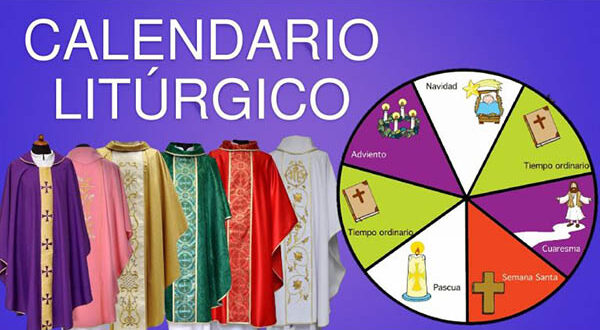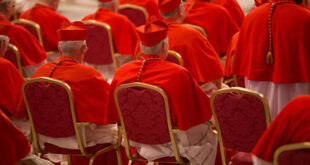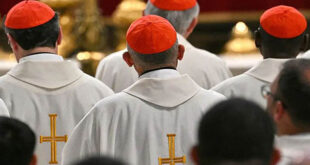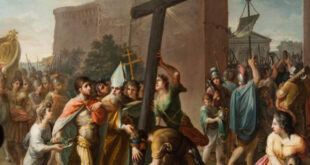In the life of the Catholic Church, time is not merely a sequence of days, weeks, and months. It is a sacred gift, a space where God reveals Himself and acts in the history of salvation. The liturgical cycles and seasons are the framework that structures this sacred time, guiding us through the mysteries of the faith and helping us live in communion with Christ and His Church. In this article, we will explore in depth the origin, history, and current relevance of the liturgical cycles and seasons, offering a spiritual guide for those seeking to deepen their faith and live it more fully.
The Origin of the Liturgical Cycles and Seasons: A Divine Design
The liturgy of the Church is not a human creation but a divine gift that has developed over the centuries under the guidance of the Holy Spirit. From the earliest Christians, the ecclesial community felt the need to celebrate the mysteries of the faith in an orderly and communal manner. The liturgical cycles and seasons have their roots in the Jewish tradition, where the people of Israel celebrated feasts such as Passover, Pentecost, and Tabernacles, remembering God’s saving works. Jesus Himself participated in these celebrations, giving them new meaning by fulfilling them in His own life, death, and resurrection.
The Second Vatican Council, in the Constitution Sacrosanctum Concilium, reminds us that “the liturgy is the summit toward which the activity of the Church is directed, and at the same time, it is the source from which all her power flows” (SC 10). The liturgical cycles and seasons are, therefore, a living expression of this reality, a means by which the Church makes present the mysteries of salvation and brings them into the lives of the faithful.
The Liturgical Cycles: A, B, and C
The Catholic Church organizes its liturgical year into three cycles, known as Cycle A, Cycle B, and Cycle C. These cycles focus on the continuous reading of the Synoptic Gospels (Matthew, Mark, and Luke), while the Gospel of John is reserved for special occasions, such as the Easter season.
- Cycle A: The Gospel of Matthew. Cycle A centers on the Gospel of Matthew, which presents Jesus as the promised Messiah, the fulfillment of the Old Testament prophecies. This cycle invites us to delve into the teachings of Jesus, particularly the Sermon on the Mount, where the path of the Beatitudes is laid out. Matthew shows us Jesus as the new Moses, guiding us toward the fullness of the Law: love for God and neighbor.
- Cycle B: The Gospel of Mark. Cycle B focuses on the Gospel of Mark, the shortest and most direct of the Gospels. Mark presents Jesus as the Suffering Servant, who comes to serve and give His life as a ransom for many (Mark 10:45). This cycle invites us to contemplate the humanity of Jesus, His compassion for the sick and sinners, and His total surrender on the Cross.
- Cycle C: The Gospel of Luke. Cycle C centers on the Gospel of Luke, which emphasizes the mercy of Jesus and His preferential care for the poor, the marginalized, and sinners. Luke presents Jesus as the universal Savior, who brings the Good News to all peoples. This cycle invites us to live with compassion and justice, following the example of Jesus.
The Liturgical Seasons: Christmas, Easter, and Ordinary Time
The liturgical year is divided into three main seasons: the Season of Christmas, the Season of Easter, and Ordinary Time. Each of these seasons has a unique character and invites us to deepen different aspects of the mystery of Christ.
- The Season of Christmas: The Incarnation of the Word. The Season of Christmas begins with Advent, a time of waiting and preparation for the coming of Christ. During four weeks, the Church invites us to reflect on the two comings of Jesus: His birth in Bethlehem and His glorious return at the end of time. Advent is a season of hope, reminding us that “the Lord is near” (Philippians 4:5).Christmas, which celebrates the birth of Jesus, is the center of this season. It is a time of joy and wonder, where we contemplate the mystery of the Incarnation: the Word became flesh and dwelt among us (John 1:14). The Epiphany and the Baptism of the Lord conclude this season, revealing Jesus as the light of the nations and His identity as the beloved Son of the Father.
- The Season of Easter: The Triumph of Life over Death. The Season of Easter is the heart of the liturgical year. It begins with Lent, a forty-day period of penance, prayer, and fasting in preparation for the celebration of Easter. Lent invites us to conversion and to die to sin, so that we may rise with Christ to new life.Holy Week, culminating in the Paschal Triduum (Holy Thursday, Good Friday, and Holy Saturday), is the most sacred time of the year. At the Last Supper, Jesus institutes the Eucharist and the priesthood; on the Cross, He offers His life for our salvation; and in the Resurrection, He conquers death and opens the gates of eternal life. Easter, therefore, is the feast of feasts, the day when “Christ, our Passover, has been sacrificed” (1 Corinthians 5:7).The Easter season extends for fifty days, until Pentecost, when the Holy Spirit descends upon the apostles and the Church is born as a missionary community. This season reminds us that the Resurrection is not an event of the past but a living reality that transforms our lives here and now.
- Ordinary Time: Life in Christ. Ordinary Time is the longest of the liturgical seasons, spanning thirty-three or thirty-four weeks. Although its name might suggest something common or routine, this season is anything but ordinary. It is a period to grow in the life of Christ, meditate on His teachings, and live as disciples in the world.During Ordinary Time, the Church guides us through the Gospels, presenting the life and ministry of Jesus. It is a time to delve into the parables, miracles, and teachings of Christ, applying them to our daily lives. As Saint Paul says, “It is no longer I who live, but Christ who lives in me” (Galatians 2:20).
The Relevance of the Liturgical Cycles and Seasons in Today’s World
In a world marked by haste, consumerism, and secularization, the liturgical cycles and seasons offer a necessary counterpoint. They invite us to pause, contemplate, and live in harmony with God’s rhythm. In a culture that often forgets the sense of the sacred, the liturgy reminds us that time is not just a succession of days but a gift from God, a space for grace.
The liturgical cycles and seasons also help us find meaning in life’s challenges. Advent teaches us to wait in the midst of darkness; Lent calls us to purify our hearts; Easter fills us with hope in the face of suffering and death; and Ordinary Time encourages us to persevere in faith, even in the mundane.
Moreover, in an increasingly fragmented world, the liturgy unites us as a community. By celebrating the same mysteries, in communion with the universal Church, we experience the unity of the Body of Christ. As the Second Vatican Council reminds us, “the liturgy is the exercise of the priesthood of Jesus Christ” (SC 7), and in it, we all participate as a priestly people.
Conclusion: A Path to Holiness
The liturgical cycles and seasons are, ultimately, a path to holiness. They guide us through the mysteries of the faith, help us grow in the life of Christ, and prepare us for eternal life. As the psalmist says, “Teach us to number our days, that we may gain a heart of wisdom” (Psalm 90:12).
In this sacred journey through time and eternity, each liturgical cycle and season is an opportunity to renew our faith, strengthen our hope, and ignite our love. May we, by living these cycles and seasons with devotion and dedication, be able to say with Saint Paul, “For to me, to live is Christ” (Philippians 1:21), and thus, attain the fullness of life in Him.
This article is an invitation to immerse oneself in the richness of the Catholic liturgy, to discover in each cycle and season a new dimension of God’s love, and to live each day as a step closer to eternity. May the Holy Spirit guide us on this journey, so that at the end of our pilgrimage, we may behold the face of God and enjoy His presence forever. Amen.







Thanks you for this article. It helps me to understand more about liturgy.
This articles has helped me to understand the liturgy years and what they are